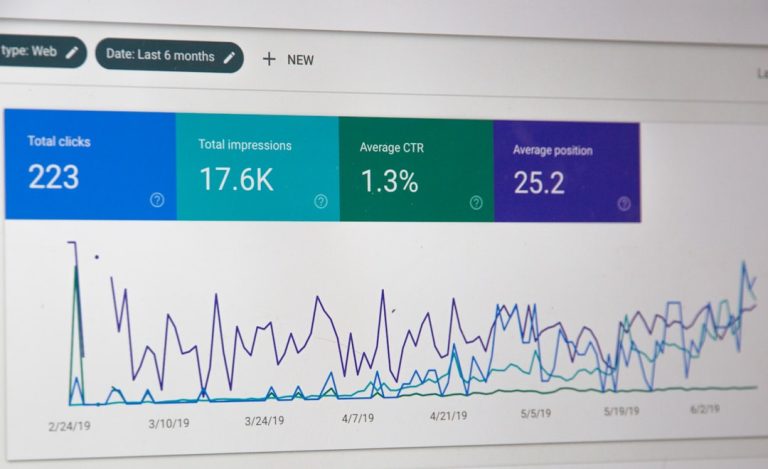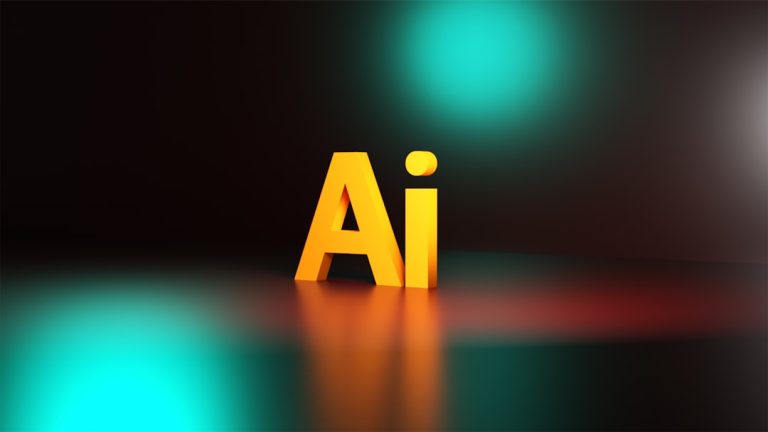Computer vision, a subfield of artificial intelligence, has emerged as a transformative technology that enables machines to interpret and understand visual information from the world around them. By mimicking human visual perception, computer vision systems can analyze images and videos, extracting meaningful data that can be used for various applications. This technology relies on complex algorithms and deep learning techniques to process visual inputs, allowing computers to recognize patterns, identify objects, and even predict outcomes based on visual cues.
As the digital landscape continues to evolve, the importance of computer vision has surged, particularly in sectors where visual data plays a critical role in decision-making processes. The rapid advancement of computer vision technology has been fueled by the proliferation of high-resolution cameras, increased computational power, and the availability of vast datasets for training machine learning models. These factors have collectively contributed to the development of sophisticated algorithms capable of performing tasks that were once thought to be exclusive to human capabilities.
From facial recognition systems that enhance security protocols to autonomous vehicles navigating complex environments, computer vision is reshaping how we interact with technology. As we delve deeper into its applications, particularly in the realm of security, it becomes evident that computer vision is not merely a tool but a pivotal component in creating safer environments and more efficient systems.
Key Takeaways
- Computer vision is a field of artificial intelligence that enables computers to interpret and understand the visual world.
- Computer vision is widely used in security applications such as surveillance, facial recognition, and object detection.
- Using computer vision for security offers benefits such as real-time monitoring, automated threat detection, and improved accuracy in identifying security threats.
- Challenges and limitations of computer vision in security include privacy concerns, accuracy issues, and the need for continuous updates and maintenance.
- Implementation of computer vision for enhanced security involves integrating cameras, sensors, and machine learning algorithms to create a comprehensive security system.
Applications of Computer Vision in Security
The applications of computer vision in security are both diverse and impactful, spanning various domains such as surveillance, access control, and threat detection. In the realm of surveillance, computer vision systems are employed to monitor public spaces, commercial establishments, and critical infrastructure. These systems utilize advanced algorithms to analyze video feeds in real-time, identifying suspicious behavior or unauthorized access.
For instance, smart cameras equipped with computer vision capabilities can detect unusual movements or recognize faces, alerting security personnel to potential threats before they escalate. This proactive approach not only enhances situational awareness but also allows for quicker response times in critical situations. Moreover, computer vision plays a crucial role in access control systems, where it is used to authenticate individuals based on biometric data such as facial features or iris patterns.
This technology has revolutionized traditional security measures by providing a more reliable and efficient means of verifying identity. In high-security environments like airports or government buildings, computer vision systems can streamline the screening process while maintaining stringent security protocols. Additionally, the integration of computer vision with other technologies, such as artificial intelligence and machine learning, enables these systems to learn from past incidents and improve their accuracy over time.
As a result, organizations can implement more robust security measures that adapt to evolving threats.
Benefits of Using Computer Vision for Security

The benefits of employing computer vision in security are manifold, significantly enhancing both the effectiveness and efficiency of security operations. One of the most notable advantages is the ability to process vast amounts of visual data in real-time. Traditional security methods often rely on human operators to monitor surveillance feeds, which can lead to fatigue and oversight.
In contrast, computer vision systems can continuously analyze video streams without succumbing to distractions or fatigue. This capability ensures that potential threats are identified promptly, allowing for immediate intervention when necessary. Furthermore, the automation of monitoring tasks frees up human resources, enabling security personnel to focus on more complex decision-making processes rather than routine surveillance.
Another significant benefit is the accuracy and reliability that computer vision brings to security applications. Advanced algorithms can be trained to recognize specific patterns or behaviors associated with criminal activity, reducing false positives and enhancing overall detection rates. For instance, in retail environments, computer vision can help identify shoplifting attempts by analyzing customer behavior and flagging suspicious actions for further investigation.
Additionally, the integration of machine learning allows these systems to adapt and improve over time based on new data inputs. This continuous learning process not only enhances the system’s performance but also ensures that it remains effective against emerging threats. Ultimately, the implementation of computer vision in security not only bolsters safety measures but also instills greater confidence among stakeholders regarding the integrity of their security protocols.
Challenges and Limitations of Computer Vision in Security
| Challenges and Limitations of Computer Vision in Security |
|---|
| 1. Limited Accuracy in Complex Environments |
| 2. Difficulty in Recognizing Objects in Low Light Conditions |
| 3. Vulnerability to Adversarial Attacks |
| 4. Privacy Concerns and Ethical Considerations |
| 5. High Computational Resource Requirements |
Despite its numerous advantages, the implementation of computer vision in security is not without challenges and limitations. One significant concern is privacy. The widespread deployment of surveillance cameras equipped with computer vision capabilities raises ethical questions about individual privacy rights.
As these systems become more pervasive, there is a growing apprehension regarding the potential for misuse or abuse of collected data. Striking a balance between enhancing security and respecting privacy is a complex issue that requires careful consideration and regulation. Organizations must navigate these challenges by establishing clear policies on data usage and ensuring transparency in their operations.
Another challenge lies in the technological limitations inherent in current computer vision systems. While advancements have been made in object recognition and behavior analysis, these systems can still struggle with certain scenarios, such as low-light conditions or occlusions where objects are partially obscured. Additionally, variations in environmental factors—such as weather conditions or changes in lighting—can impact the accuracy of detection algorithms.
Furthermore, adversarial attacks pose a significant threat; malicious actors may attempt to deceive computer vision systems through techniques such as image manipulation or spoofing biometric data. Addressing these vulnerabilities requires ongoing research and development to enhance the robustness and resilience of computer vision technologies in security applications.
Implementation of Computer Vision for Enhanced Security
Implementing computer vision for enhanced security involves a strategic approach that encompasses technology selection, system integration, and ongoing maintenance. Organizations must first assess their specific security needs and determine how computer vision can best address those requirements. This process often begins with selecting appropriate hardware—such as high-resolution cameras—and software solutions that align with their operational goals.
Once the technology is chosen, integrating it into existing security infrastructure is crucial for maximizing its effectiveness. This may involve connecting computer vision systems with alarm systems, access control mechanisms, or incident management platforms to create a cohesive security ecosystem. Moreover, successful implementation requires training personnel to effectively utilize these advanced systems.
Security staff must be equipped with the knowledge and skills necessary to interpret data generated by computer vision technologies and respond appropriately to alerts or incidents. Regular training sessions can help ensure that personnel remain proficient in using these tools while also fostering a culture of vigilance within the organization. Additionally, ongoing maintenance and updates are essential for keeping computer vision systems functioning optimally.
As technology evolves and new threats emerge, organizations must be prepared to adapt their systems accordingly—whether through software updates or hardware upgrades—to maintain a robust security posture.
Future Developments and Trends in Computer Vision for Security

The future of computer vision in security is poised for significant advancements driven by emerging technologies and evolving societal needs. One notable trend is the increasing integration of artificial intelligence (AI) with computer vision systems. As AI algorithms become more sophisticated, they will enhance the capabilities of computer vision technologies by enabling more accurate object recognition and behavior analysis.
This synergy will allow for more nuanced understanding of complex scenarios—such as distinguishing between benign activities and potential threats—ultimately leading to improved decision-making processes within security operations. Additionally, the rise of edge computing is set to revolutionize how computer vision systems operate within security frameworks. By processing data closer to its source—such as within cameras or local servers—edge computing reduces latency and bandwidth usage while enhancing real-time analysis capabilities.
This shift will enable organizations to respond more swiftly to incidents as they unfold while also alleviating concerns related to data privacy by minimizing the amount of sensitive information transmitted over networks. Furthermore, advancements in sensor technology will likely lead to more versatile applications of computer vision across various environments—from urban settings to remote locations—expanding its utility in safeguarding public safety.
The Role of Computer Vision in Strengthening Security
In conclusion, computer vision stands at the forefront of modern security solutions, offering unprecedented capabilities that enhance situational awareness and threat detection across various domains. Its applications range from surveillance and access control to advanced threat analysis, demonstrating its versatility in addressing contemporary security challenges. As organizations increasingly adopt this technology, they benefit from improved efficiency and accuracy while also navigating complex ethical considerations surrounding privacy and data usage.
Looking ahead, the continued evolution of computer vision will undoubtedly shape the future landscape of security operations. With advancements in AI integration and edge computing on the horizon, we can expect even greater enhancements in real-time analysis and decision-making processes. As we embrace these developments, it is essential for stakeholders to remain vigilant about ethical implications while leveraging the power of computer vision to create safer environments for all.
Ultimately, as this technology matures, its role in strengthening security will become increasingly vital—transforming how we protect our communities and assets in an ever-changing world.
If you’re interested in learning more about how websites handle user data, particularly in the context of technologies like computer vision that may process personal images or information, you might find the cookie policy of BongoC insightful. Understanding their cookie policy can provide clarity on how data is managed and protected, which is crucial in fields involving data-intensive technologies. You can read more about their specific practices by visiting their cookie policy page.
FAQs
What is computer vision?
Computer vision is a field of artificial intelligence that enables computers to interpret and understand the visual world. It involves the development of algorithms and techniques for machines to gain high-level understanding from digital images or videos.
What are the applications of computer vision?
Computer vision has a wide range of applications, including facial recognition, object detection and tracking, image and video analysis, medical image analysis, autonomous vehicles, augmented reality, and robotics.
How does computer vision work?
Computer vision works by using algorithms to process and analyze visual data from images or videos. This involves tasks such as image recognition, object detection, image segmentation, and depth estimation.
What are the key components of computer vision?
The key components of computer vision include image acquisition, preprocessing, feature extraction, object recognition, and interpretation. These components are used to enable machines to understand and interpret visual data.
What are some challenges in computer vision?
Challenges in computer vision include handling variations in lighting, viewpoint, and occlusions, as well as developing algorithms that can accurately interpret and understand complex visual scenes. Additionally, ensuring the ethical and responsible use of computer vision technology is also a challenge.
















